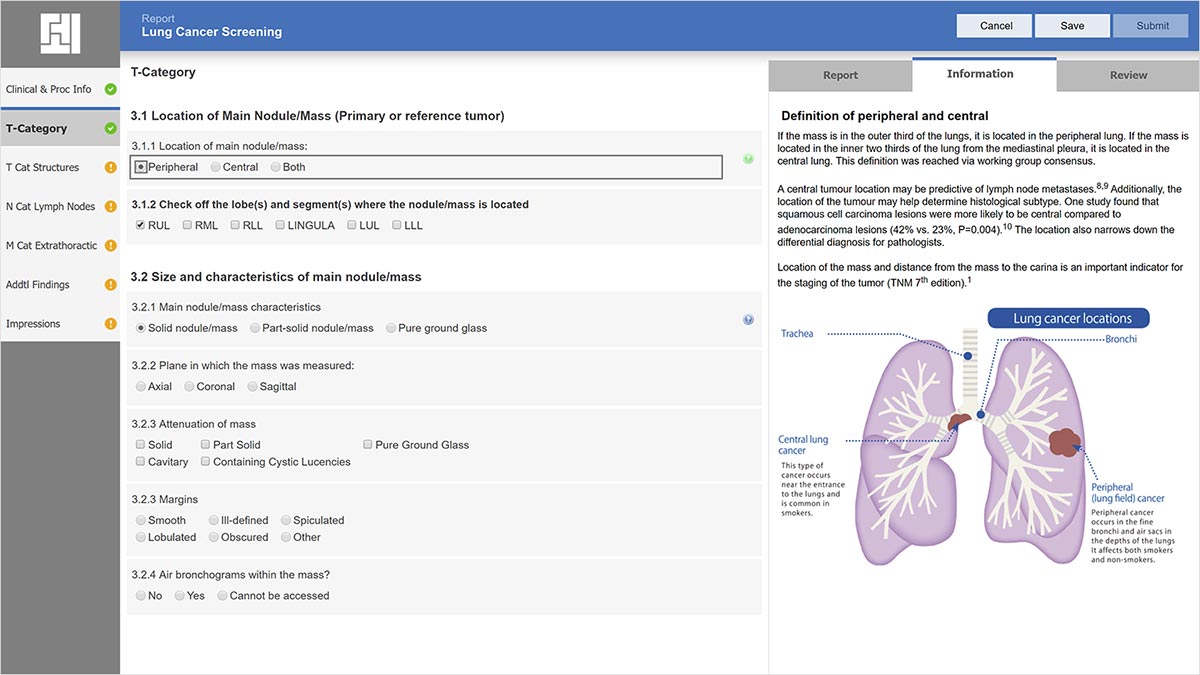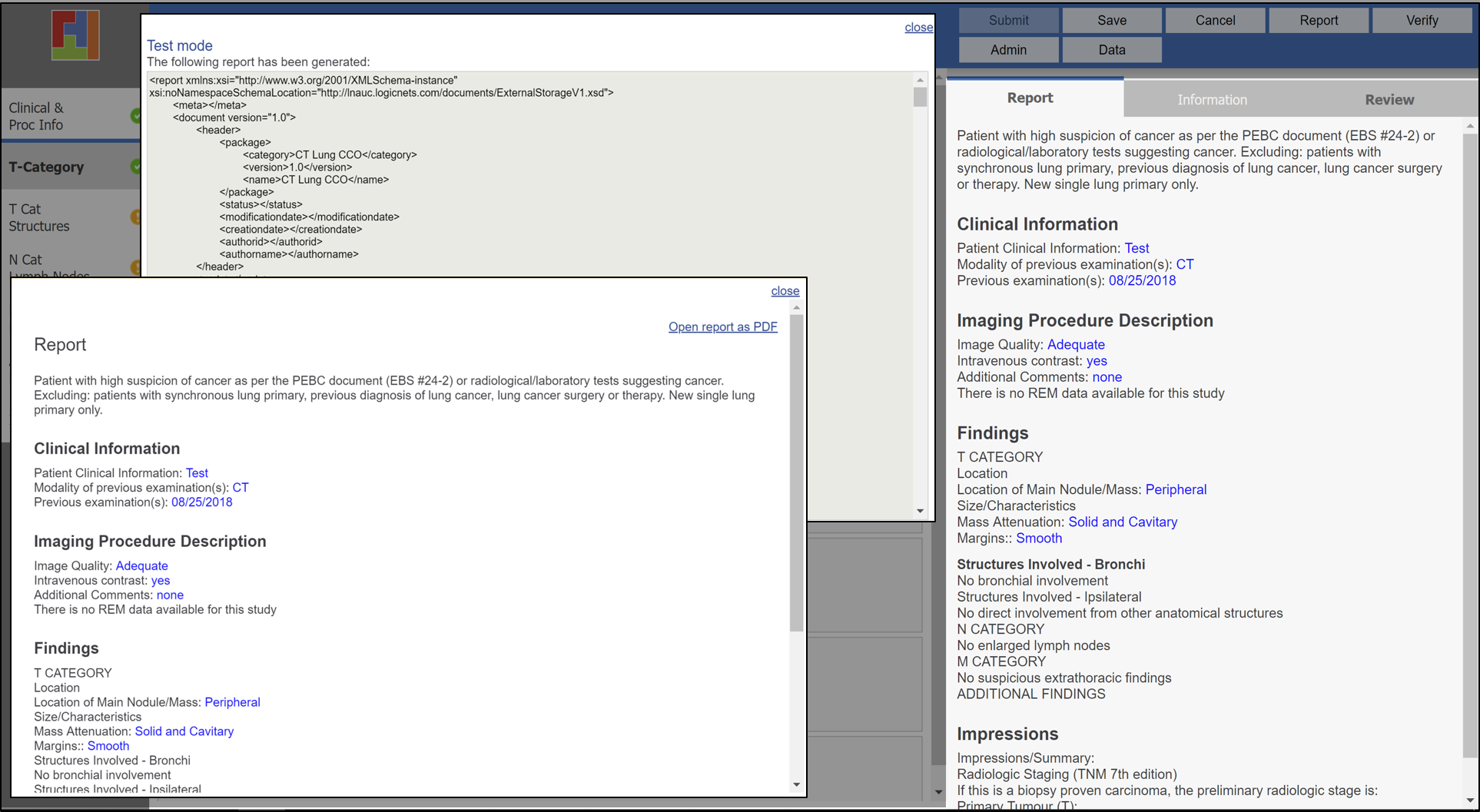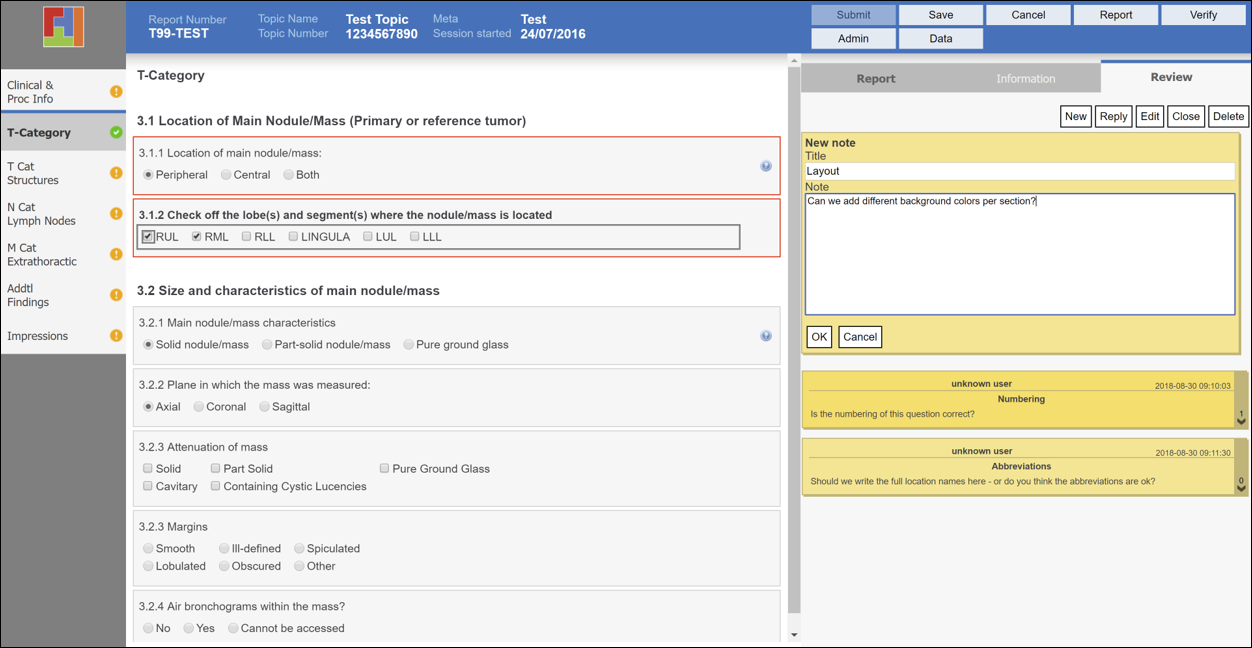

From clinical procedures to population health research, collecting complete and accurate information is critically important. LogicNets lets you easily create intelligent and dynamic voice-enabled structured reporting applications so that you can count on capturing the optimal information for patient care and research. Clinicians in pathology, radiology, oncology, along with a wide range of other areas, have used LogicNets to greatly improve their productivity and user experience while also ensuring clinical quality and meeting the important data gathering objectives of population health research. LogicNets structured and synoptic reports dynamically build flexible observation entry forms that support each clinician’s way of working. The results, with computed conclusions are dynamically presented on-screen and also packaged as structured output feeding downstream workflow and systems.
An article in the May 2019 Journal of Clinical Oncology (ASCO) shows clear evidence of improved patient outcomes and survival as a direct result of using Standardized Structured Reporting (SSR) (AKA “Synoptic Reporting”). The research looked at over 70 thousand colorectal cancer cases in the Netherlands of which one third had been processed using SSR. All SSR in the Netherlands is implemented through nationwide use of the LogicNets platform by our customer PALGA. The study traced SSR-supported cases along with reference and the use of alternative “narrative reporting” processes to corresponding patient outcome records in the two largest Dutch registries — the NKR (Dutch Cancer Registration) and the DRCA (Dutch ColoRectal Audit).
The study credits the measurable increase in completeness and accuracy of SSR-acquired patient data to significant improvements in the administration of adjuvant therapy and survival rates for those patients. Read the article here.
Accurate and complete patient information, properly processed and fed directly into the workflow are the key to ensuring successful patient outcomes.
Dynamic and intelligent interaction with clinicians minimizes noise and ensures that the most important information is collected with less effort in a shorter window inline with your preferred way of working.
Collecting crucial information and automatically applying state-of-the-art clinical process knowledge enables you to identify the hidden factors critical to a positive outcome.
Being able to consistently collect standardized, accurate, and complete data is the only way to support investment in registries and meet the massive potential of population health programs.

LogicNets structured reporting is enabled by our unique feature set for automating complex reporting protocols in a way that gives users intelligent, contextual access to the most relevant questions and to provide input in the format and structure that is most convenient. As our system was put into large scale usage by pathologists, radiologists, and oncologists, their special needs were rapidly incorporated into the product. The result is a system that actually enforces good reporting habits while simultaneously making life easier for the professional entering the data.
Features that have made LogicNets such a powerful fit for structured and synoptic reporting in healthcare include:
Context and patient data integration – The system is easily integrated with and invoked from the LIS, RIS or EMR, capturing and pre-populating patient and study data so that the context is clearly displayed and there is no need for redundant data entry.
Dynamic and flexible input forms – With LogicNets reporting, clinicians are in total control. You see a wide range of relevant questions and you can flexibly navigate to quickly provide answers in any order. LogicNets reacts in real-time to each report item you’ve entered. Based on the underlying protocol rules, the form immediately rebuilds to subdue less relevant data and highlight factors now in focus based on prior input. If data is re-entered or overrides other answers, the prior answers are intelligently purged to prevent inconsistencies.
Speech recognition – So that you can maintain visual focus on a sample or image, we provide support for leading speech recognition products. You can speak commands to navigate to any area of the report and you can dictate the inputs, all with commonly used audio options.

Unlimited validation – LogicNets gives you standard validation for different data formats. But it also applies any level of decision logic to dynamically validate inputs according to critical rules.
Mandatory answers and progress monitor – LogicNets indicates whether question groups have been completed or not and will prevent reports from being submitted it mandatory questions have not been answered.
Flexible organization – reports are easily organized into coherent groups in the LogicNets form presentation using tabs and other layout controls.
Contextual reference information – When complex questions require you to review additional information, LogicNets allows contextual reference, training, and help content to be dynamically displayed.

Dynamic on-screen reports – As you enter observations, protocol logic dynamically executes to generate on-screen summaries, computed results, and conclusions.
Calculators – LogicNets reporting is particularly useful for automatically calculating and presenting important derivative data such as TNM and cancer staging scores.
Structured data output – LogicNets reporting applications automatically generate a structured data report using any number of healthcare data interchange and informatics standards. Multiple data packages can be processed in parallel to connect via web services to a range of downstream functions including EMR, payer systems, and registries.
PDF reports – On-screen reports can be captured and packaged as PDF files for download and distribution separate to systemic distribution.
LogicNets is used by pathology and oncology labs globally to automate and deliver proprietary protocols and to make international reporting standards more widely available.
LogicNets introduces control over completeness and accuracy while also minimizing the impact of reporting so that radiologists can meet their high productivity demands.
LogicNets is ideal for collecting screening data or performing any type of health assessment integrating validated input from clinicians, patients, and the EPR.
Advanced imaging and a wide range of other medical procedures pose potential danger to patients. LogicNets structured reports allow providers as well as the manufacturers to easily enforce best safety practices.